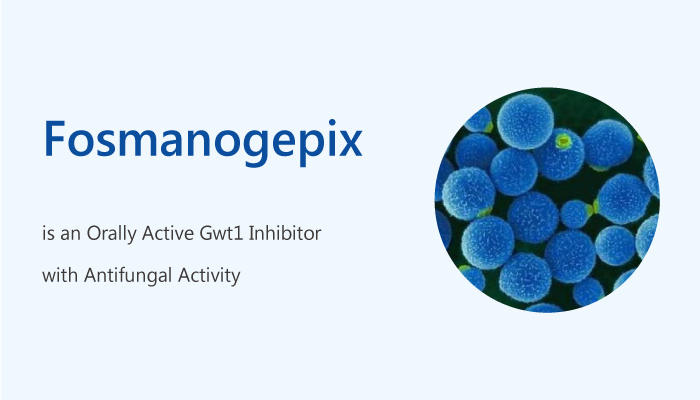Invasive pulmonary aspergillosis (IPA) is the leading cause of mold infections in the immunocompromised host. Despite the current aggressive antifungal therapy, IPA still results in a high percentage of fatalities (>50%) among severely immunosuppressed patients, such as neutropenic leukemia and transplant patients. In addition, significant issues with toxicity and drug-drug interactions may further limit the clinical usefulness of the currently available antifungal agents. Fosmanogepix is a first-in-class antifungal that is currently in clinical development for the treatment of invasive fungal infections. It is an N-phosphonooxymethyl prodrug, APX001A, that targets the highly conserved Gwt1 fungal enzyme. It catalyzes an early step in glycosylphosphatidylinositol anchor biosynthesis. Inhibition of Gwt1 prevents the appropriate localization of cell wall mannoproteins, compromising cell wall integrity, biofilm formation, germ tube formation, and fungal growth.

APX001A has in vitro activity against A. fumigatus AF293. The prodrug Fosmanogepix protects immunosuppressed mice from IPA. Treatment of mice with 78 mg/kg once daily (QD), 78 mg/kg twice daily, or 104 mg/kg QD Fosmanogepix significantly enhances the median survival time. In addition, Fosmanogepix prolonged day 21 postinfection overall survival. Moreover, Fosmanogepix resulted in a significant reduction in lung fungal burden versus the untreated control and resolved the infection.
In summary, Fosmanogepix is very well tolerated across all administered doses of oral or intravenous formulations. In addition, the favorable PK allows a single daily administration with the ability to switch between oral and intravenous formulations. Fosmanogepixis a broad-spectrum, first-in-class treatment of invasive fungal infections. Thus, it is necessary for further investigations into the development of this first-in-class agent.
Reference:
Shaw KJ, et al. Antimicrob Agents Chemother. 2018 Jul 27;62(8). pii: e00523-18.
Gebremariam T, et al. Antimicrob Agents Chemother. 2019 Jan 29;63(2). pii: e01713-18.